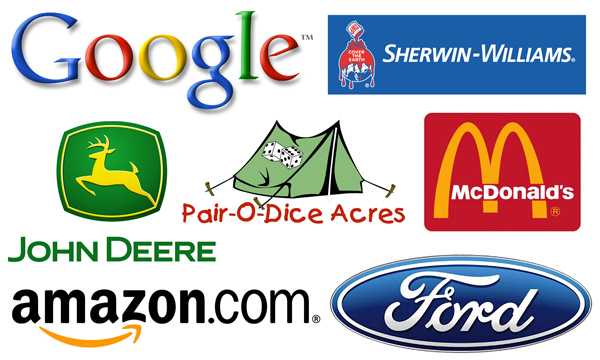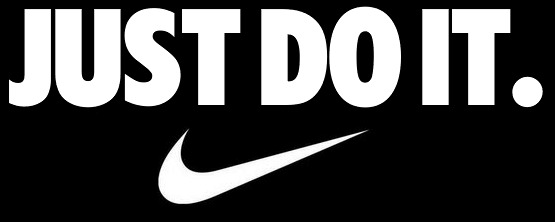If somebody asked you the name of the font used on your latest brochure or directory ad, would you be able to answer that question? In fact, if you paid somebody to design that advertising for your business, how long would it take that designer to identify the font? I actually encountered a situation about a year ago where a campground owner asked her website designer for the name of the font that was used as a substitute for a logo on her website. The website designer responded that she did not know, and that it was “just something that she thought looked nice.”
According to Thomas Phinney, the CEO of FontLab, there are perhaps 300,000 fonts in the world today, contained within about 60,000 font families (representing variations of a single font.) Those 300,000 fonts are not your biggest concern; however, the fonts that are used in your own advertising – from your website to print to signage to apparel – should all be singularly consistent. Fonts are one of the key components of branding, where “close enough” or “looking nice” is just not good enough to protect the integrity of your business.
There is only one font that represents such universally recognized brand names as Ford, Coca-Cola, AT&T, and Kleenex. For example, the font used in the Coca-Cola logo is called Spencerian script, a popular font in the United States from about 1850 to 1925, adapted by Coca-Cola in 1885 with special alternate character ligatures for the capital letters “C”. Needless to say, that font has shown some staying power! Also script based, the Kleenex logo is based upon the Montauk Pro Bold font, with proper kerning to connect the letters as if they were written with one continuous swipe of a marker.
Fonts such as these were not chosen randomly, even though we years later think of them as everyday acquaintances. The characteristics of various fonts trigger a series of predictable emotions – from strength and reliability and trustworthiness to modernity and cutting edge and fun. These fonts then go hand in hand with color, which is also anything but random. I still own sets of the old Pantone® Process Color System swatch books that were the color reference standard in the days before the personal computer came into everyday usage. Those color values allowed designers to communicate color values with a consistency from one project to another, allowing for the matching of very specific colors on press. In theory, computers and monitors today can reproduce as many as 16.7 million colors, described as various combinations of red, green, and blue (RGB) color pixels. In practice, those colors are often difficult to share from one computer to another because identical colors may appear with considerable differences when viewed on two uncalibrated monitors.
Then there is the issue of the differences between the RGB (monitors) and CMYK (print) color spaces, which do not even come close to perfectly overlapping and translating from one to the other. Generally speaking, if colors are to be reproduced both online and in print, it is necessary to work in the CMYK color space, where the differences will be less pronounced when converting to RGB than when converting in the opposite direction. None of this is particularly easy, which is part of the rationalization for turning to experts for assistance. When you thought Kodak®, you thought yellow and red, and when you think UPS®, you think brown, but the world has gotten more complex. Fonts and colors are only two components that come into play in the design of an effective logo that will stand the test of time. (Keep Coca-Cola in mind as your long-term goal!)
You can design your own logo, use clipart, buy one online for $79.00, or find thousands of graphic design hobbyists who will design you a logo, of sorts, for $5.00 on fiverr.com. You will get what you pay for. Work with a single designer (it is not a competition!), expect multiple concepts and revisions, reject clip art, expect multiple formats including a vector file, and expect to pay a fair price. Ask yourself if that designer in Bangladesh or the Philippines has any understanding of the concept of camping.
Along with a logo, try to develop a tagline, something that is clever, not a cliché. It is almost not necessary to identify the companies associated with the following taglines, but I will disclose them at the end of this article if you happen to get stumped on one:
- Can You Hear Me Now?
- Where’s the Beef?
- When You Care Enough to Send the Very Best.
- Think Small.
- Just Do It.
- We Try Harder.
- You Deserve a Break Today.
Franchises from McDonald’s to Kampgrounds of America (KOA) recognize the importance of consistency in everything from fonts to colors to taglines, but you do not need to run a franchise business in order to think smart like one. Once you have established your branding, it needs to be used everywhere, without exception. This includes your signage, your building exteriors and interiors, and your apparel and branded merchandise. Branding is inherently not “generic” in any sense of the word. When there is a range full of cattle that all looks alike, you need to make your cattle stand out from the rest. It’s all about branding.
(Need help with matching the taglines with their corporate parents? Here you go: Verizon, Wendy’s, Hallmark, Volkswagen, Nike, Avis, and McDonald’s.)
This post was written by Peter Pelland



